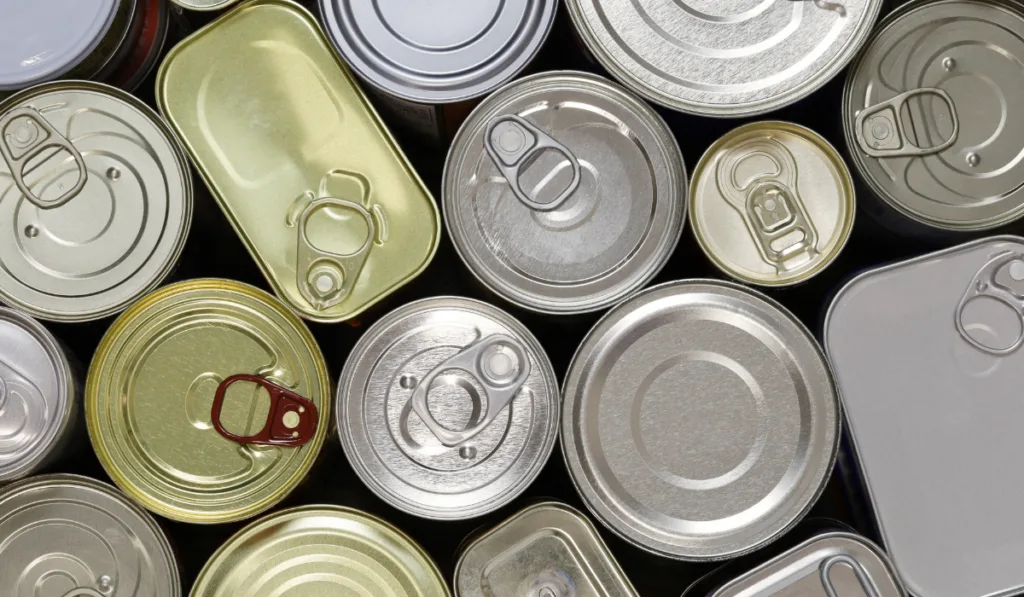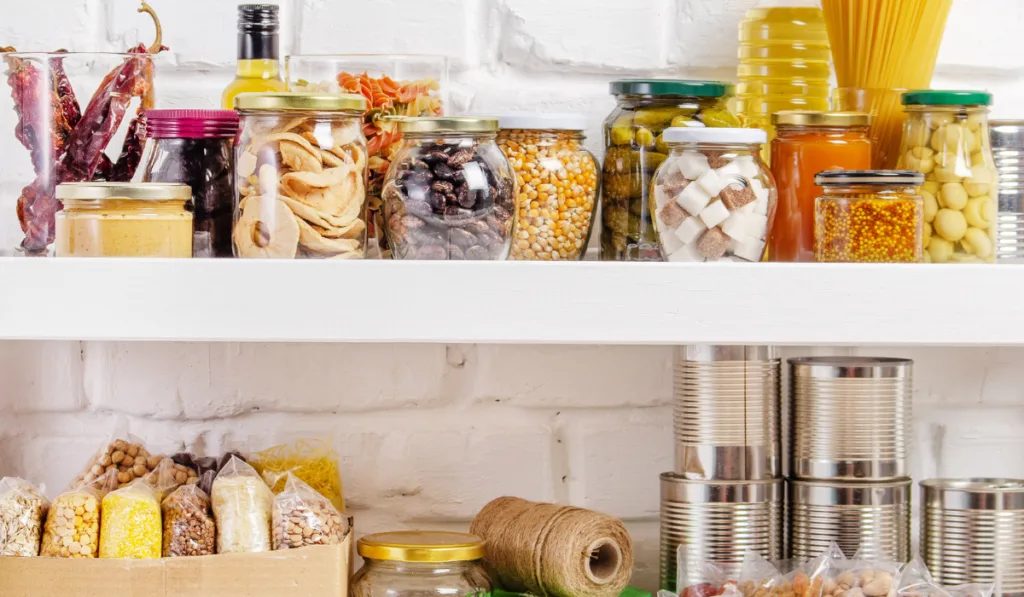Building a stockpile is important for saving money, fighting inflation, and simply preparing your family for the worst. When you stockpile food for your family, it is important that you store it properly.
With improper storage, your food is likely to go bad quickly or become infested with pests, wasting money and leaving your family without the food you worked so hard to stock for them.

Table of Contents
How You Store Your Stockpile Matters
When you build a stockpile to be able to feed your family, it is important that you are careful how you store that food to help prevent waste.
You need to protect your food from bugs, rodents, and even the air itself to keep the food fresh and safe to eat. If you do not properly store your stockpile, your food supply will be ruined, and you will not have it when you need it most.
How to Store Stockpile Food to Help Protect It and Make It Last Longer
To help protect your food from pests, humidity, and other things that can cause it to spoil quickly, you need to take the time to store your food properly.
Many foods like flour, sugar, pasta, and other pantry goods, do not come in containers that will protect them. By properly storing your food, you can extend the shelf life of these items considerably.
Airtight Containers
Airtight containers are going to be the fastest way to get your stockpile stored safely and protected from pests.
If something is already infested, the insects that hatch from it will not be able to spread to other containers and will run out of oxygen and die, allowing you to dispose of the food without risking any of your other food.
Nice airtight containers for your dry goods can even make your pantry look neat and organized. Look for containers that fit the space you will be storing food in and that look good too.
Label the containers well; even if you think you can tell what the contents are, it never hurts to have a label to be sure.

Vacuum Sealing
To help protect your food a bit longer in the pantry and give food in the freezer the longest lifespan, you need to consider vacuum sealing. This provides your food with a barrier between pests, air, and moisture, which all facilitate the breakdown of organic material.
Vacuum sealing your pantry goods is a great way to protect the overflow that does not fit into your everyday use airtight containers.
The lack of oxygen prevents the hatching of pests in your dry goods. And you can give them more protection by freezing things like flour and rice for 48 hours before you vacuum seal them.
To preserve things like meats, cheese, and produce in the freezer, you can vacuum seal them. This will prevent air from getting into your packaging, which will prevent issues like freezer burn that make items spoil faster.
Food that has been vacuum-sealed and stored in a chest-style deep freezer can last for years if the freezer does not lose power and maintains the sub-zero temperatures.
Rotate Your Food Storage
It is important that you take the time to rotate your food storage for your family. This will keep food from going bad after sitting for too long. As you bring in more food, place the new supply in the back so that the older stuff is used first.
Preserving Fresh Food
Canning
Fresh food can be preserved for your stockpile. Canning is one of the most popular ways to preserve food for your stockpile.
Canning homemade jams and jellies that you’ve made from the fruit you found on sale is a great way to build your stockpile, prevent waste, and save money.
If you garden, you can get a lot of value from canning your homegrown tomatoes and other fruits and vegetables. While this preservation method for your food takes some work and learning new skills, it is a valuable way to save money and make sure that your family has the food they need, even on a budget.

Dehydration
Dehydrating fresh food from your garden or the grocery store is a great way to save money on food for your family and to build a stockpile of shelf-stable foods that will help keep your family healthy and happy, even when the grocery store shelves are empty.
Dehydration helps remove the liquid from your food to stop the breakdown process. Dehydrating food is easy to do with an electric dehydrator or even with the sun.
After your food is dried, move it to airtight containers to protect the food from moisture and pests, and you’ll drastically increase the lifespan of your food.
Storing Tin Canned Food
Stocking canned food from the store is a frugal way to fill your pantry quickly and a great way to make use of the discounts that are often offered on these over the winter.
To protect your tin cans, you need to make sure they’re kept in an area that is not too moist. Too much moisture, even from high humidity, can lead to rust of your tin canned food over time.
For the best results, keep your tin canned foods in a cool, dark place and consider running a dehumidifier if you live in a moist area with a lot of humidity or rain. Avoid storing tin cans in a damp basement.

Storing Your Stockpile Long Term
If you are looking for a way to build a long-term stockpile of pantry goods, you may want to look at other food storage options like using mylar and storing your sealed goods in an airtight bucket.
Buckets make a great place to store your dried goods. A food-grade bucket can store packaged food or loose dry goods. To help make your grains last longer and prevent pest issues, you should freeze your grains before placing them into your food storage buckets.
When you seal the bucket, you can add oxygen absorbers to help remove any remaining oxygen in the bucket. This helps prevent the items from breaking down and pests from thriving.
